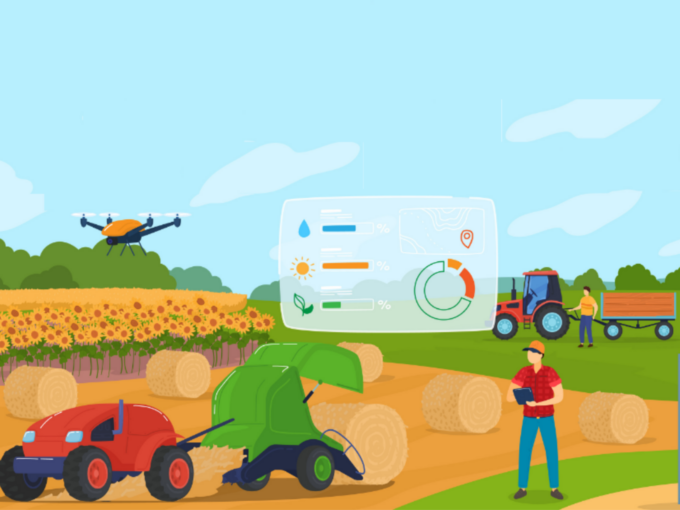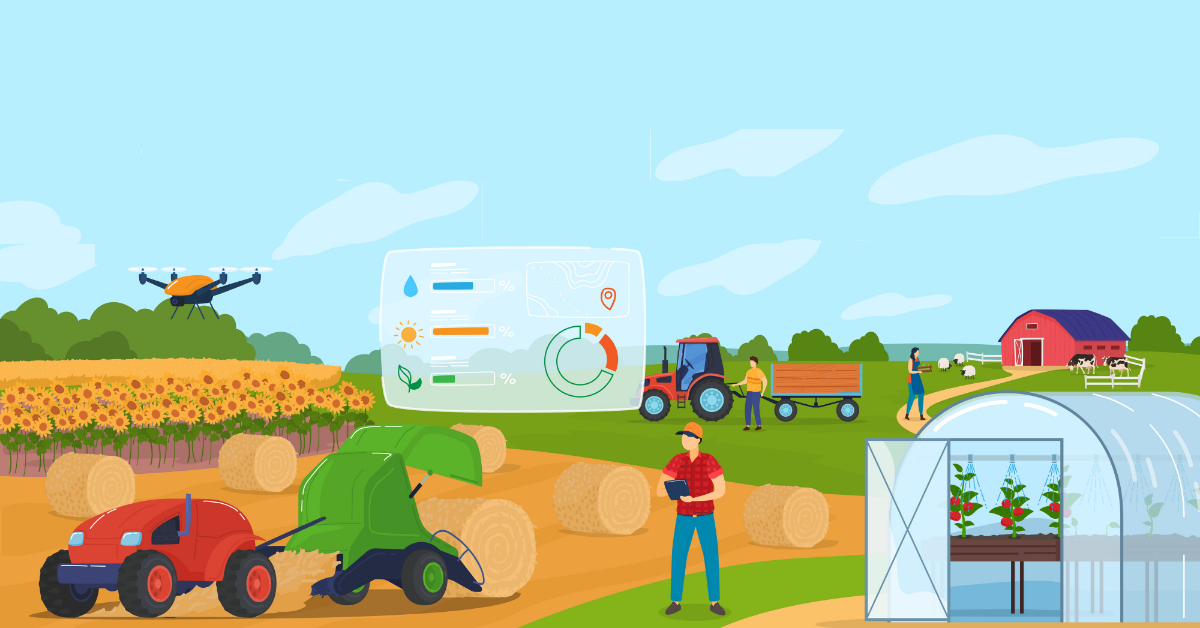In India, agriculture contributes to 16.5% of India’s gross domestic product (GDP) and employs 43% of the Indian workforce
India’s agritech startup ecosystem has flourished in the past couple of years by leveraging tech to mitigate chronic issues
There is a dire need for farmers to shift towards a system were smallholders can freely practice digital agriculture practices without the fear of risks associated with farming

In India, agriculture contributes to 16.5% of India’s gross domestic product (GDP) and employs 43% of the Indian workforce. The agriculture, forestry, and fishing sectors together contribute around 17.8% to the Gross Value Added (GVA) of the country which is estimated at around INR 32 Lakh Crore.
Indian farmers, particularly smallholder farmers who constitute nearly 86% of total farm holdings, face enormous risks. These risks arise out of weather-related production challenges, lack of access to irrigation, finance from formal sources, quality seeds, inputs, technologies, and marketing opportunities.
The primary production sector still remains largely disconnected from the markets and the larger agri-food ecosystem. This means that price signals usually do not reach the growers in time. This also translates into farmers being unwilling to invest in technologies and machinery that can increase efficiency and reduce costs. When it comes to perishable produce, disconnected and fragmented commodity supply chains in rural areas pose a real challenge. This often results in huge post-harvest losses.
According to the Reserve Bank of India, only 40% of India’s small and marginal farmers are covered by formal credit. Being the most vulnerable, they are still largely excluded from the formal financial system. This makes them dependent on informal sources of finance and subject to high chances of exploitation.
Further, the high costs of servicing and risks involved make the one-size-fits-all kind of financial products offered by traditional financial institutions ill-suited for farmers. To achieve better bargaining power, farmer collectives are being promoted to solve some, if not all, these problems.
In fact, India’s agritech startup ecosystem has flourished in the past couple of years by leveraging tech to mitigate such chronic issues. As per Inc42 analysis, India is home to over 150 agritech startups.
De-Bottlenecking The Agri Value Chain
Digital technologies have made a massive impact on the agriculture sector globally, throughout the entire value chain. Innovations such as farm machinery automation, AI-powered grain sorting machines, online marketplaces, crop and soil sensors, and digitally-enabled logistics among others have helped farmers reduce losses and wastage.
The $370 Bn Indian agriculture sector has witnessed quite a digital revolution in the past decade. India has over 834 Mn internet subscribers as of September 2021 with the internet penetration rate at 61%. The issues of lag in information dissemination and ineffective market linkages could easily be solved by increased access to mobile network connectivity. In fact, private players are increasingly tapping into this potential through the power of mobile apps offering digital transactions.
Digital Innovations Redefining Agriculture
In the last six years, agritech startups in India have witnessed unprecedented growth. Leveraging 4G connectivity and rising smartphone penetration, agritech entrepreneurs have built farmer platforms, B2B agri marketplaces, rural fintech businesses, and farm-to-consumer (F2C) brands. But this represented only a small part of Indian agriculture and reached less than 20% of Indian farmers.
I believe there is a dire need for farmers to shift towards a system where smallholders can freely practice digital agriculture practices without the fear of risks associated with farming. For instance, through digitalisation, Farmer Producer Organisations (FPOs) can estimate the total volume of output from member farmers and identify potential buyers during or before the harvest season.
A more far-reaching and scalable intervention can be a unified ‘digital’ platform. This platform could bring together all the agri-food stakeholders, especially farmer collectives and agri-enterprises in one place.
Another scalable intervention is that of a ‘digital wrapper’. This can facilitate structured interactions between various value chain stakeholders that are willing to reach out to the farmers. It would comprise a wide gamut of products and services such as insurance, finance, and advisory.
The aim is to seamlessly connect the fragmented agri-ecosystem especially, the smallholder farmers, with the entire ecosystem. This would lead to enhanced access for farmers to markets, formal sources of finance, and various other services.
Recently, the government too has encouraged the adoption and acceleration of digitally-enabled tech in the agriculture space. I strongly believe that multi-stakeholder collaborative approaches are essential for the wide-scale adoption of these digital innovations in agriculture, particularly by smallholder farmers.




![Read more about the article [App Friday] AI chatbot Replika can be your 2 AM friend albeit with a few flaws](https://blog.digitalsevaa.com/wp-content/uploads/2021/12/Imageu2qj-1639056533511-300x150.jpg)





